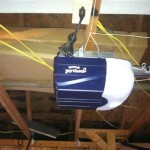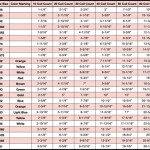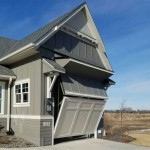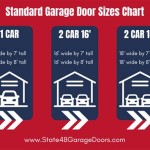How To Make Your Garage Cooler
Garages, often serving as more than just parking spaces, can quickly become uncomfortably hot, especially during warmer months. This can make working in the garage unpleasant, damage stored items, and even affect the temperature of adjacent living spaces. Understanding the factors that contribute to garage heat and implementing effective cooling strategies are crucial for maintaining a more comfortable and functional environment. This article outlines several methods for reducing garage temperatures, focusing on practical and cost-effective solutions.
Improving Garage Ventilation
Ventilation is paramount when addressing garage heat. Stagnant air traps heat, while proper ventilation allows for the circulation of cooler air and the expulsion of hot air. Several ventilation strategies can be employed, ranging from simple solutions to more involved modifications.
Opening Doors and Windows: The simplest and most immediate form of ventilation involves opening the garage door and any windows. This allows for cross-ventilation, facilitating airflow throughout the space. Ideally, open the door or windows on opposite sides of the garage to create a natural breeze. However, security concerns and weather conditions may limit the practicality of this approach.
Installing a Garage Door Screen: A garage door screen offers a compromise between ventilation and security. These screens allow airflow while keeping insects and unwanted guests out. They come in various configurations, including retractable and fixed options, and can be easily installed and removed as needed.
Adding Vents: Strategically placed vents can significantly improve airflow within the garage. Passive vents, such as gable vents or soffit vents, allow for natural air circulation. Gable vents are typically installed near the roofline, while soffit vents are placed under the eaves. These vents allow cooler air to enter the garage from below while warmer air escapes through the gable vents. The effectiveness of passive vents depends on the prevailing wind direction and the temperature difference between the inside and outside of the garage.
Installing an Exhaust Fan: An exhaust fan provides a more active form of ventilation. These fans are typically installed in the ceiling or wall and draw hot air out of the garage. The size and capacity of the exhaust fan should be appropriate for the garage's dimensions. An exhaust fan can be particularly effective in conjunction with other ventilation methods, such as passive vents, to create a more efficient airflow system. When selecting an exhaust fan, consider the noise level and energy efficiency of the unit.
Using a Whole-House Fan: While not specifically designed for garages, a whole-house fan can indirectly help reduce garage temperatures. By drawing cooler air into the house through open windows, it can create a pressure differential that encourages airflow into the garage, particularly if the garage is connected to the house. However, this method may not be suitable for all garage configurations.
Insulating the Garage
Insulation plays a critical role in regulating garage temperature by preventing heat from entering the space during hot weather and retaining heat during cooler periods. Proper insulation can significantly reduce the need for active cooling methods, such as air conditioning.
Insulating the Garage Door: The garage door is often a major source of heat gain. Uninsulated metal doors can radiate heat into the garage, making the space uncomfortably hot. Garage door insulation kits are readily available and relatively easy to install. These kits typically consist of rigid foam panels that are cut to fit the door sections and attached with adhesive. Alternatively, spray foam insulation can be applied to the door, although this method requires more skill and specialized equipment. Insulating the garage door can make a noticeable difference in garage temperature.
Insulating the Walls: The walls of the garage can also contribute to heat gain. If the walls are uninsulated or poorly insulated, heat can transfer through the walls from the outside. Batt insulation, made of fiberglass or mineral wool, is a common and effective way to insulate garage walls. The insulation is placed between the studs and covered with drywall to protect it from damage. Spray foam insulation is another option, providing a tight seal and high R-value. However, spray foam insulation is typically more expensive than batt insulation and requires professional installation.
Insulating the Ceiling: The ceiling is often the most significant source of heat gain in a garage, as hot air rises. Insulating the ceiling is crucial for maintaining a cooler garage temperature. The same insulation methods used for the walls can also be applied to the ceiling. If the garage has an attic space above it, insulating the attic floor can further reduce heat transfer into the garage. When insulating the ceiling, ensure proper ventilation in the attic space to prevent moisture buildup.
Sealing Air Leaks: In addition to insulation, sealing air leaks can help prevent heat from entering the garage. Use caulk or weatherstripping to seal gaps around windows, doors, and other openings. Pay close attention to areas where pipes or wires enter the garage, as these are common sources of air leaks. Sealing air leaks can also improve the energy efficiency of the garage by reducing drafts and preventing heat loss during cooler months.
Implementing Cooling Strategies
Beyond ventilation and insulation, various cooling strategies can be employed to lower garage temperatures. These methods range from simple and inexpensive options to more sophisticated and costly solutions.
Using Fans: Fans provide a simple and effective way to circulate air and create a cooling breeze. Box fans, pedestal fans, and ceiling fans can all be used in the garage. While fans do not lower the overall temperature of the garage, they can make the space feel cooler by increasing evaporation from the skin. Strategically placing fans to circulate air throughout the garage can significantly improve comfort. Consider using multiple fans to maximize airflow.
Evaporative Coolers: Evaporative coolers, also known as swamp coolers, work by evaporating water to cool the air. These coolers are more effective in dry climates, where the air has a low humidity. Evaporative coolers can lower garage temperatures by as much as 15-20 degrees Fahrenheit. However, they can also increase humidity levels, which may be undesirable in some environments. Ensure adequate ventilation when using an evaporative cooler to prevent moisture buildup.
Portable Air Conditioners: Portable air conditioners provide targeted cooling for specific areas of the garage. These units are self-contained and can be easily moved from one location to another. Portable air conditioners typically require venting to the outside to exhaust hot air. They are more energy-intensive than fans or evaporative coolers but can provide a more significant cooling effect. When selecting a portable air conditioner, consider the size of the garage and the cooling capacity of the unit. Ensure that the garage has adequate electrical capacity to support the air conditioner's power requirements.
Mini-Split Air Conditioners: Mini-split air conditioners are a more permanent cooling solution for garages. These units consist of an indoor unit and an outdoor unit, connected by refrigerant lines. Mini-split air conditioners are more energy-efficient than portable air conditioners and can provide more consistent cooling. They also offer the advantage of ductless installation, which avoids the need for extensive ductwork. However, mini-split air conditioners are more expensive to install than portable air conditioners and require professional installation.
Reflective Coatings: Applying reflective coatings to the garage roof or exterior walls can help reduce heat absorption from the sun. These coatings reflect sunlight away from the garage, preventing the surfaces from heating up. Reflective coatings are available in various colors and formulations, including white and silver. They can be applied with a brush, roller, or sprayer. Before applying a reflective coating, ensure that the surface is clean and dry. Reflective coatings can significantly reduce the amount of heat that enters the garage.
Landscaping: Planting trees or shrubs around the garage can provide shade and reduce heat gain. Deciduous trees are particularly effective, as they provide shade during the summer months and allow sunlight to reach the garage during the winter months. Trees should be planted at a distance from the garage to prevent root damage to the foundation. Consider the mature size of the trees when selecting species to plant. Vines can also be trained to grow on the garage walls, providing additional shade and insulation. However, be careful to choose vine species that will not damage the walls.

How To Cool A Garage With Or No Windows

11 Garage Cooling Ideas Options Solutions

Keep Your Garage Cool In The Summer Easy Cheap Diy

How To Cool A Garage In Summer Artisan Doorworks

10 Ways To Cool Down Your Hot Garage In The Summer Youtube

Garage Cooling Solutions 9 Tips To Help You Beat The Heat

Simple Garage Cooling S

5 Ways To Make Your Garage Cooler In The Summer

Garage Cooling Solutions 9 Tips To Help You Beat The Heat

How To Keep Your Garage Cool Danley S Garages
See Also








